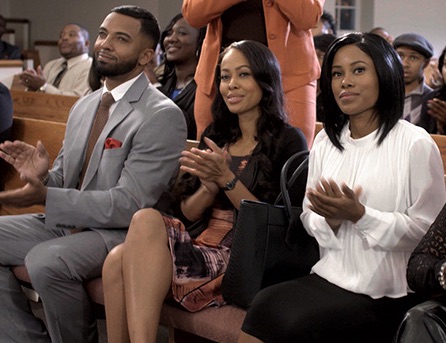As Storm Clouds Form, Diginets Bet on Blue Skies

Despite many forecasts of turbulent times for the platform, broadcasters are standing by their diginets, making investments, launching originals and forging network and local TV tie-ins. The initiatives are all aimed at shoring up the long-term viability of a sector that had been booming until recently hitting the pause button.
“Me TV’s numbers are really good,” said Neal Sabin, vice chairman of Weigel Broadcasting. That classic-TV dot-two is run by Weigel, as are two relatively new diginets: male-oriented Heroes & Icons and Decades, a CBS joint venture that airs a daily original hosted by newsman Bill Kurtis. If Me TV were a cable network, it would be the 17th-mostpopular one in the country, Sabin said.
That growth and stature make Sabin a big booster of the platform. His optimism defies warnings from skeptics that many of the 25 or so existing subchannels could cave under mounting pressure from digital competition and the risk of losing the brpadcast spectrum they air on in the FCC auction.
“There could be fallout for some diginets,” Sabin concedes. “We expect there will be changes—there are always changes in this business. We are preparing for them.”
Meantime, however, a growing number of industry watchers say they don’t believe most diginets have the momentum to come out of this critical juncture in their decade-long history alive and well.
Steve Schwaid, VP of digital strategies for media consulting firm CJ&N, said he sees competition from digital platforms—which simply didn’t exist like they currently do when diginets were launched—as the primary barrier to multicasters having a long-range future.
“It’s not the fault of the diginets. It’s that I have so many places to watch,” Schwaid said. “More people probably watch You Tube in an hour than see all the diginets.”
Broadcasting & Cable Newsletter
The smarter way to stay on top of broadcasting and cable industry. Sign up below
Meanwhile, Bill Hague, executive VP at Frank N. Magid Associates, believes diginets’ fate is tied into the spectrum auction and whether broadcasters cash in diginets’ spots on the dial.
This is also a brand-new sector in an industry nearing a century of existence. A good number of dot-twos—whose stock-in-trade has long been reruns—are still in the process of finding their footing, dimming their prospects further, Hague said.
“It will come down to who is left standing at the end of the day and how much spectrum is left,” Hague said. He predicts the particularly strong brands—Me TV, NBCU’s Cozi TV, Tribune’s Antenna TV and Bounce Media’s Bounce TV—will be among them.
“In the diginets world, the pause button has just been hit,” Hague said.
Broadcasters, for their part, are keeping calm and carrying on.
“We are very excited about diginets,” said Abby Auerbach, executive VP of the TVB, which tracks the channels’ viewership.
“We have been seeing tremendous growth in numerous markets, where they are beating or meeting local cable in similar genres,” she said. “In doing so, they are offering advertisers viable additional broadcast programming with real ratings and a greater amount of reach in the marketplace.”
Meantime, broadcasters are trying to beef up that reach even further, elevating their channels with new offerings to appeal to new crops of potential viewers, such as cord-cutters.
African-American-oriented network Bounce is perhaps the most aggressive in doing so. The network is the only one of its kind to produce scripted originals, and this year is adding magazine show Ed Gordon to its slate of original comedies and dramas, as well as live boxing. Bounce TV has been rated nationally by Nielsen since April 2013. Sister networks Grit and Escape announced plans in May to be rated nationally by Nielsen.
Buzzr, the game show channel owned by FremantleMedia North America, is leveraging its assets—the Goodson-Todman game shows that air on the network, along with their formats—to turn the channel into a multiplatform destination.
FremantleMedia is partnering with ABC on producing new versions of some of those classic game shows—Match Game and To Tell the Truth among them. Buzzr will promote the revivals through efforts including running marathons of the old versions. ABC gets to broadcast the new ones, said Ron Garfield, Buzzr executive VP and general manager.
Telemundo is using its diginet, TeleXitos, as a platform for its primary stations to air local content nationally, as well as for events such as sports and telethons.
Meantime, Cozi TV is producing short-form content around its vintage TV series and their stars. Its Hoff a Minute newscast, for instance, is devoted to Baywatch’s David Hasselhoff.
Sony Pictures Entertainment’s Get TV, which started as a classic movie channel, has rebranded itself to better resemble TV stations of the ’80s that aired the channel’s classic TV series the first time around.
Jeff Meier, Get TV senior VP of programming, said creating that nuance is part of diginets’ appeal, and why vintage TV works so well on them. “They really are providing a lot of comfort and escape to a simpler time,” Meier said.
For many viewers, absolutely. But as Schwaid sees it, all good things will, in fact, come to an end. “I think time has passed [diginets] by,” he said.










